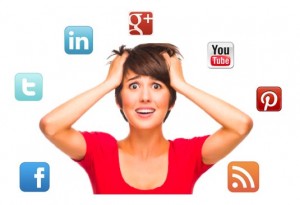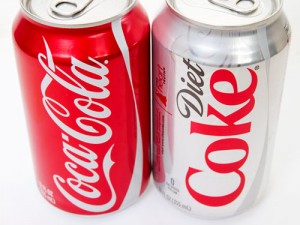
Photo courtesy of http://webservicesinc.net/social-media-management/
I love social media. My instagram, twitter, Facebook, Pinterest, and Yik Yak keep me up to date on what’s going on around me. No matter how many times my mother tells me to put my phone away because these “apps are a waste of time and brain cells”, I’ve always felt like there was more to it than that. Is this idea that social media is dumbing us down a myth? A recent study published in the Journal of the Royal Society Interface tried to debunk this idea.
As humans, we are a copycat race. We have advanced to where we are today by watching others and mimicking, therefore adapting. So, in this age of the internet, will the endless amounts of information at our fingertips confuse us, or increase our knowledge base?
Phys.org described the experiment as follows:
“…researchers tested university students with a series of brain-straining questions. 100 volunteers were separated into 5 social networks each with 20 individuals. Connections between the people in the networks were assigned randomly by a computer to fit 5 different network patterns. At one extreme all the people in the network were connected directly to all the others, and at the other extreme there were no connections at all. To test how these networks helped the people in them to learn, the scientists quizzed the volunteers with a ‘cognitive reflection test’, a series of questions which rely on analytical reasoning to overcome incorrect intuition. To see if the social networks helped the people in them to improve their answers the volunteers were asked each of the questions 5 times. The first time the volunteers had to figure it out on their own, the next 5 times they were allowed to copy the answer from their neighbours in the network.”
In the end it was discovered that the individuals with well connected networks performed better each time they were asked a question and each time they had the chance to steal their neighbors answer. This finding proves that when we have well connected networks we mimic our peers, which helps us form the correct answer (Is Social).
In a way this is great. We are becoming smarter by way of mimicry of our networks. But the study didn’t stop there.
“The scientists compared how well the volunteers faired in the three consecutive questions to see if the volunteers were actually getting better at figuring out the problems themselves or just at copying the right answers. They found that there was no improvement from one question to the next; even when individuals had realized in the first round of questions that finding the solutions required deeper thought, in the next question they were back at square one.”
So where does this leave us now? In the long run it seems that social media may make us dumber, or at least leave us at the same level as before, but for now it is increasing our knowledge base. Although this study is a sizable advancement, I fell as if there aren’t enough factors being taken into consideration. What if the person’s networking isn’t as advanced as it seems to be in this study? Scientists didn’t seem to take into consideration that over half of children are already using social media by the age of 10 (Reporter). What kind of networking could a seven year old possibly achieve? Mom, dad, and Suzy from the playground? In my mind we are still left with the same answers we had before. We have no idea. There are still so many questions to be answered when it comes to the long term effects, but because of social medias newly formed presence it may be awhile until we see the studies that may shock and scare the entire world.
But until then, all we know is that if you fit into the group of well networked adults, you may or may not be victimized by social media.
Sources:
“Is Social Networking Making Us Stupid?” Is Social Networking Making Us Stupid? N.p., n.d. Web. 19 Sept. 2014. <http://phys.org/news/2014-02-social-networking-stupid.html>.
Reporter, Daily Mail. “More than Half of Children Use Social Media by the Age of 10: Facebook Is Most Popular Site That Youngsters Join.” Mail Online. Associated Newspapers, 05 Feb. 2014. Web. 19 Sept. 2014. <http://www.dailymail.co.uk/news/article-2552658/More-half-children-use-social-media-age-10-Facebook-popular-site-youngsters-join.html>.













